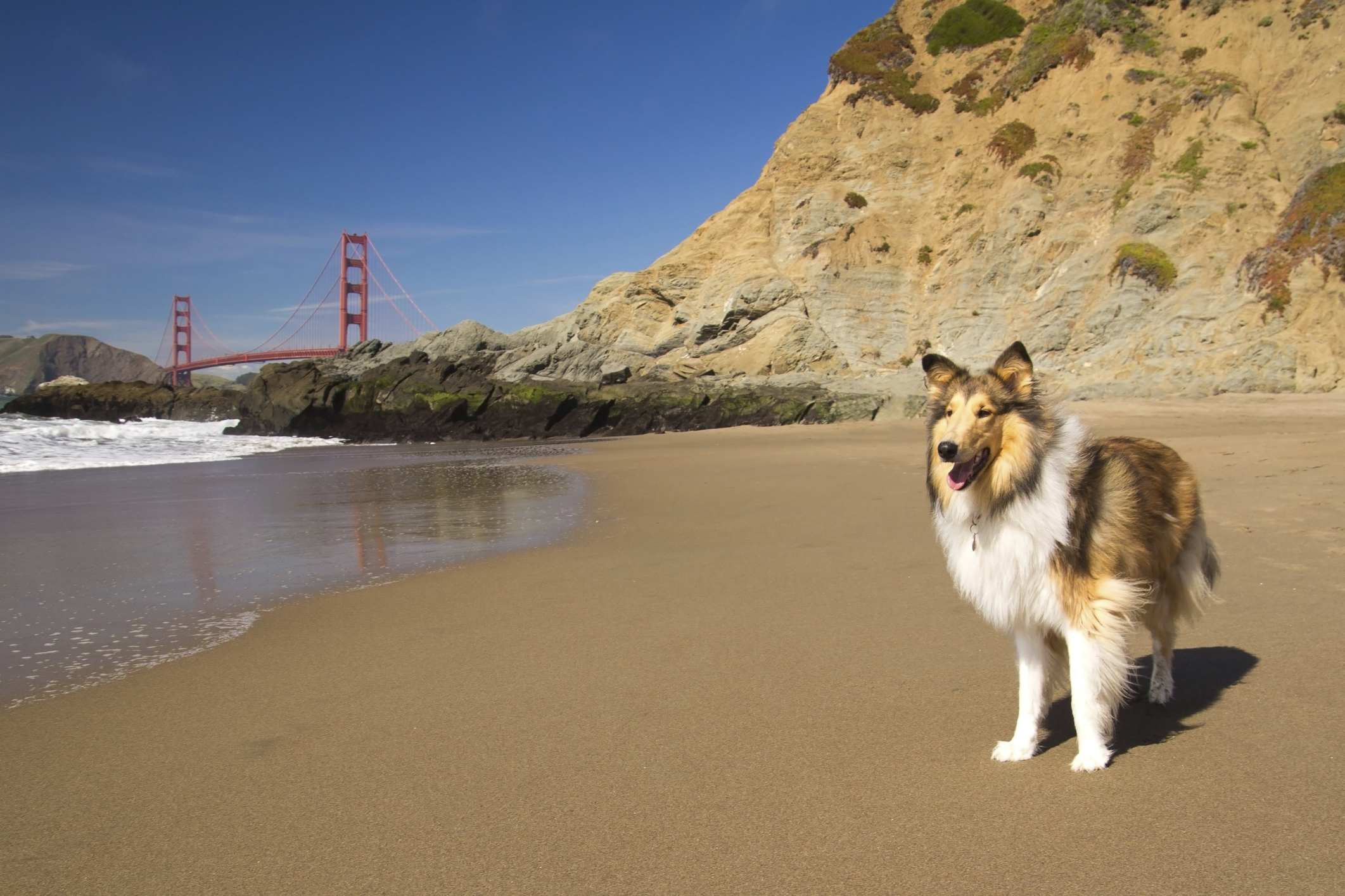
Bay Area canine owners are up in arms over a proposed rule that would limit dog walking.
The American system of national parks has been lauded as the country’s “best idea.” But the San Francisco Bay Area may soon face a controversial change in some of its federally managed parks. In a move that has divided residents, the National Park Service recently issued a notice of proposed rulemaking for a regulation that would cut back on dog walking at popular Bay Area parks.
The Park Service noted that its regulation is intended to preserve the parks’ natural resources, and ensure the safety of visitors.
The Park Service’s proposed rule would identify nearly two dozen locations within the Golden Gate National Recreation Area, including popular destinations like Stinson Beach, Fort Mason, and Ocean Beach. Within these areas, the regulation would designate certain areas where dogs would be required to remain on a leash during a visit to a national park. It would ban dogs entirely in other areas.
The draft rule included a map illustrating the areas located along the Bay Area’s coastal region that would see a change in policy if the proposed regulations take effect.
The Park Service has long been tasked with maintaining and managing the Recreation Area, which covers nearly thirty miles of land in and around San Francisco. The Recreation Area includes a variety of historical and natural resources—such as endangered species and federal landmarks—and is one of the “most highly-visited” parks in the federal system.
Over the years, the Recreation Area has received an increase in visitors, with a figure that now surpasses 17.7 million visitors annually. As foot traffic has grown, bringing along with it more canines, the Park Service has voiced its concerns about preserving the natural resources of the park.
More than ten years ago, the agency issued a notice of proposed rulemaking, requesting comments on whether it should regulate dog walking. Then, it began a “dog management planning process” to come up with a proposed rule. Following years of research and planning, in 2011 it released a Dog Management Plan/Environmental Impact Statement that it updated after comments. The agency based its current proposed rule, in part, on these efforts.
In addition to regulatory action, there have also been legal challenges. A group of dog walkers filed suit, resulting in a 2005 ruling that NPS failed to follow proper procedures in adopting on-leash dog regulations.
The Park Service’s most recent regulatory effort has been open for public comment since last month, and thus far has received more than 500 comments. Reponses have reflected the controversial nature of the proposal.
Some residents appreciate the proposed restrictions. One commenter expressed frustration with dogs running off-leash in parks, stating that it “makes the [Recreation Area] park experience unenjoyable and even unsafe.” Others hoped the rule would bring more of a “balance” between visitors and canines after what they called “years of the ‘dog takeover.’”
But many dog owners disagree with the new rules. One resident who claims to make daily visits to parts of [Recreation Area] saw little purpose to the rules. “Everybody gets along out here. Everybody picks up. There’s never any problems,” he stated.
Some commenters cited their reliance on these park areas for dog walking. One identified an area designated for mandatory on-leash activity, Fort Funston, as a “paradise” and a “haven” for dogs and their owners. The commenter noted that “we have all been using it in harmony for the longest time and we will be very upset to see regulations in place that limit off-leash activities. Very few places in the SF Bay Area provide room for dogs to get a really good workout.”
Other commenters expressed skepticism at the Park Service’s stated concern for the ecological integrity of the park in proposing the rule: “Humans do far more damage to the parks than dogs do. Dogs don’t leave trash in the woods or set fire to forests.”
Local officials have spoken out in support of the dog owners. In a recent statement, San Francisco Supervisor Scott Wiener declared that “this proposed rule will affect many Bay Area residents who rely on these lands to walk their dogs and will push more dogs into our already overcrowded city parks. I urge the National Park Service to reconsider.”
In an attempt to allay concerns that the proposed rule would harm dog owners, Christine Lehnertz, a superintendent for the Recreation Area, stated that under the rules the Recreation Area “would remain the most dog-friendly national park in the United States.” Lehnertz also acknowledged that, when managed well, dog walking can be “a healthy and popular way to enjoy park lands.”
The Park Service’s notice-and-comment period was initially scheduled to close on April 25, 2016, but the Service recently extended the deadline to May 25, 2016.



